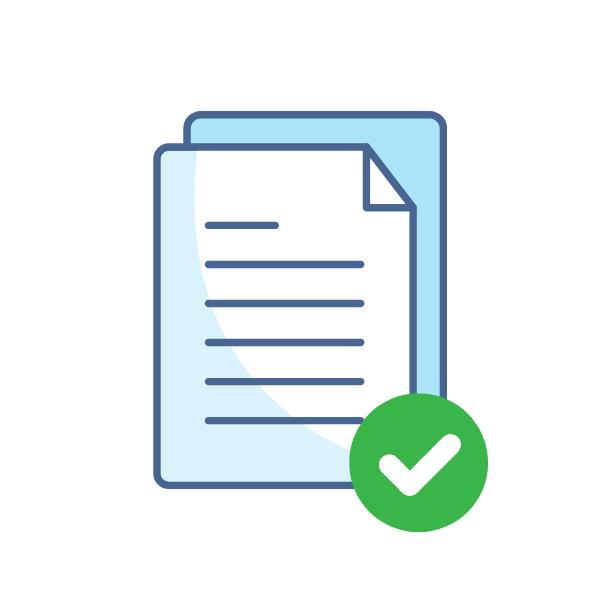
The CE marking itself costs nothing in the sense that you do not have to pay a fee to use the CE mark. In addition, you don’t have to pay any form of licensing fee to the authorities.
However, the conformity process that must be followed in order to meet the CE marking requirements includes steps where it is often necessary to engage external consultants, testing companies and notified bodies.
Content Overview

FREE CONSULTATION CALL (US, EU & UK)
- Request a free 30-minute call with Ivan Malloci to learn how we can help you with:
- Find product requirements
- Certification and labeling
- Lab testing
Consultants
Managing the CE marking process requires you to have expertise covering EU directives and harmonised standards. In addition, it is required to create certain documentation, and not least to ensure that the product is designed in accordance with the relevant safety requirements.
All of this costs money unless you can manage everything in-house. As such, the cost of CE marking is largely dependent on how much assistance from external consultants and engineers you’ll need.
Here’s an overview of the different types of CE marking-related consulting services you may have to factor in.
1. Identify the applicable directives and regulations
It is necessary to first determine which EU directives and regulations apply to the product. Which directives apply depends on different factors:
- Product category (e.g. PPE)
- Usage (e.g. consumer or commercial usage)
- Specifications/functionality (e.g. input voltage and WiFi)
- Age group (e.g. toys for 14-year-olds and younger)
You can of course read the EU directives on your own and thus make an assessment of which ones apply to your product. This can be quite time-consuming though.
2. Research harmonised standards
EU directives and regulations generally provide more high-level compliance requirements. The exact technical requirements can only be found in harmonised standards, which tend to be more specific to certain product types.
Determining which EN standards apply is often more difficult than finding the relevant directives and regulations, which is why many brands rely on external consultants.
3. Implementation of EN standards
Some EN standards, for example, EN 71-3, restrict chemicals and heavy metals. Other EN standards are more extensive and may require your product to be designed to meet specific mechanical safety requirements or electrical safety requirements.
This can require that you hire specialists that have the expertise needed to adjust your bill of materials, technical design drawings and circuit diagrams, based on the relevant harmonised standards. Without this, you may end up mass-producing a product that is inherently non-compliant by design.
4. Create documentation and label files
Finally, you must also create a Declaration of Conformity (DoC), user instructions, and technical documentation. You can either do this yourself or pay for external help.
Cost
The cost ultimately depends on how much help you’ll need with the conformity process. If you intend to let someone manage the entire CE marking process for you then you’re looking at thousands or even tens of thousands of euros.
Lab testing
The basis for CE marking is that your product is verified to be compliant with the applicable harmonised standards. This in turn requires third-party lab testing, assuming you don’t have the necessary equipment and expertise in-house.
The lab testing cost depends on the complexity of the product. Here are a few examples:
- EN 71 (Toys): 500 – 1500 EUR
- RoHS (Electronics): 300 – 500 EUR
- EMC (Electronics): 500 – 1200 EUR
- Radio Equipment Directive (Electronics): 700 to 1200 EUR
More than one lab test is usually required to CE mark the product. For example, electronic products often have to be tested according to the RoHS directive and the EMC directive. Thus, the testing cost is dependent on the number of directives and standards that apply.
Notified Body
Some products require a notified body to review the documentation and carry out tests of the product. In these cases, not just any testing company will do. Examples of companies that act as notified bodies include SGS, Intertek and RISE.
The cost of hiring a notified body depends entirely on the product type, regulatory category and complexity.
How can we minimise the CE marking cost?
For starters, you can rarely eliminate the need to have your product lab tested. Second, you cannot get away from the need to pay a notified body, if one is mandatory for your product. This in turn depends on the applicable conformity assessment procedure.
But, you save a lot of money by managing the following in-house:
1. Identify applicable directives and regulations
2. Find the relevant harmonised standards
3. Implement the EN standards into your design files, bill of materials and circuit diagrams
4. Create the DoC, technical documentation and user instructions
















 Create compliance checklists for your product (US, EU & UK)
Create compliance checklists for your product (US, EU & UK) 20+ product certificate templates
20+ product certificate templates Create label files
Create label files Book product testing
Book product testing
kindly advise how to become a CE inspector on mobile equipments [mining and fix plant]
In my experience as a CE marking consultant, minimising costs for CE marking is never a good idea, for many reasons. These are some of them:
– A CE marking consultant has experience in this field and knows what to do and how to do it in the correct way. Hence, a consultant will make you save a lot of time and hassles
– Identification of applicable directives and regulations is not so easy as it seems. I saw a lot of wrong CE marking (i.e.: non compliant with law and potentially non safe product) because they failed to identify the correct applicable norms
– The point of view of a third person is always important. For example, during the analysis of risks and safety measures we tend to assume that our product is safe because “we know it well”, but often the products hide risks that designers have not thought of and that are more easily identified by those who not have followed the entire design process and therefore can provide an unbiased point of view.
– Making a mistake in carrying out the CE marking process (which is very common when doing it yourself) involves the risk of accidents, with all that follows (injuries, deaths, lawsuits, damage to the corporate image, fines, going to jail, etc.).
In conclusion, I suggest you to always rely on an expert in CE marking and collaborate following his/her directions and advice.
Hello Daniele,
These are all good points and overall I agree. That said, many companies simply don’t have the funds needed to have a consultant manage the entire process for them.
In these cases, they will need to develop at least some of the needed expertise in house.